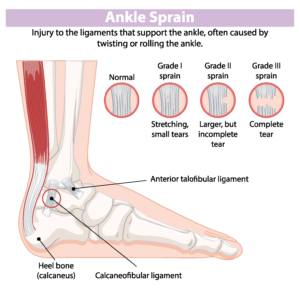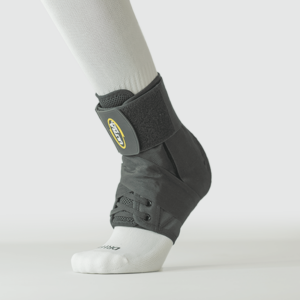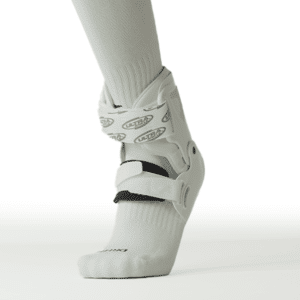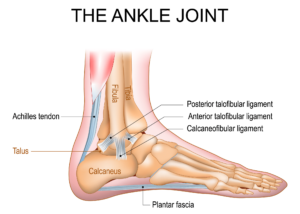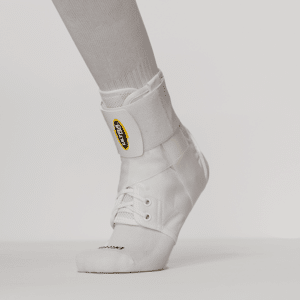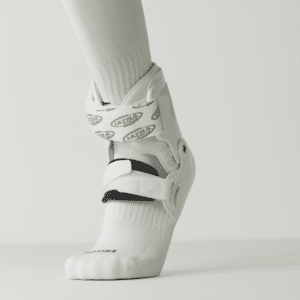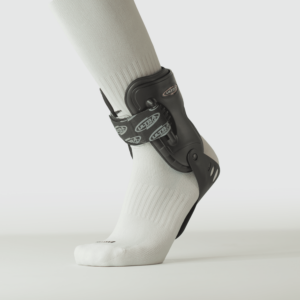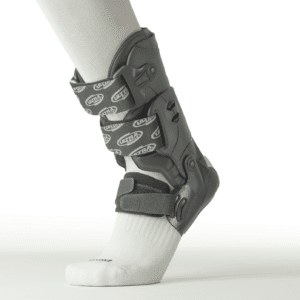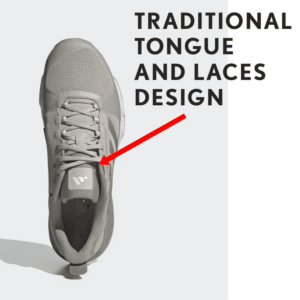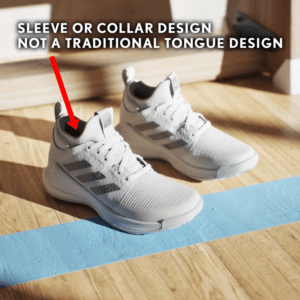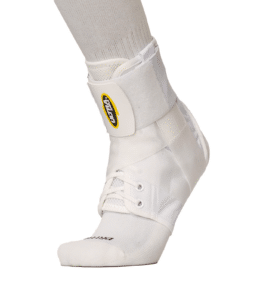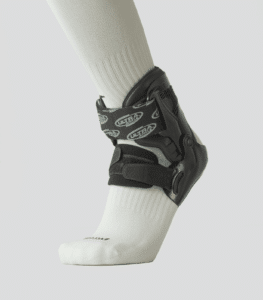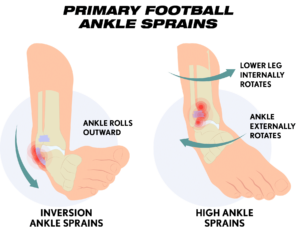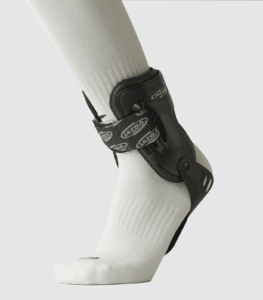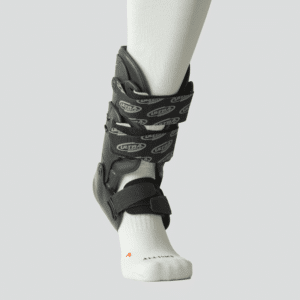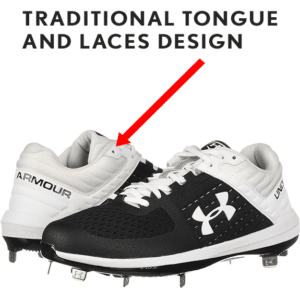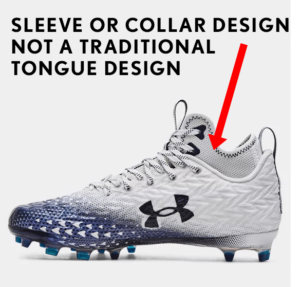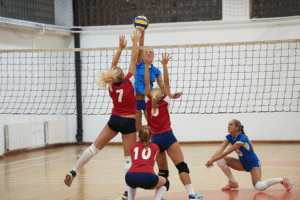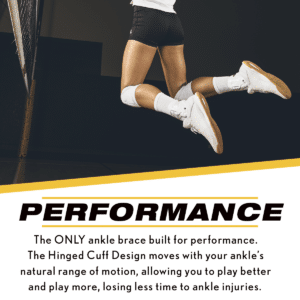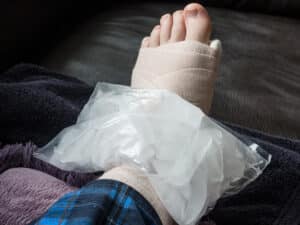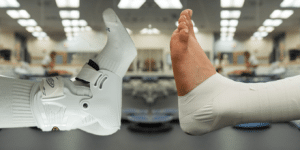When to Transition from a Lace-Up to a Hinged Ankle Brace
Ankle injuries are one of the most common issues faced by athletes, and the right ankle brace can make all the difference in ankle injury prevention, performance, and when needed, recovery. Many athletes opt for lace-up ankle braces because they’ve been around forever, they’re affordable, easy to find, and fit well in most sports shoes. However, while lace-up braces offer some level of support, they also come with limitations that can negatively impact both your performance and long-term ankle health.
At Ultra Ankle, we aim to help athletes make informed decisions about their ankle support. In this blog, we’ll explore when it’s time to move on from a lace-up brace to a more supportive hinged ankle brace, especially if you have a history of multiple ankle injuries.
The Disadvantages of Lace-Up Ankle Braces
Lace-up ankle braces are commonly used by athletes, but they come with significant limitations. These braces work much like a reusable tape job: they offer short-term support by wrapping the ankle in the neutral position. They often include figure-8 straps to help restrict excessive ankle rolling. However, because they are made from fabric, once you start moving, the brace’s ability to provide stability decreases rapidly—often within the first 15 minutes of activity. This leaves your ankle vulnerable to injury or re-injury, especially if you’ve already suffered from multiple sprains.
For athletes who have experienced more than three ankle injuries within two years, a lace-up brace is simply not enough support. Repeated injuries can loosen the ligaments in your ankle, making them more susceptible to further damage. This creates what trainers call a “cycle of injury.” Breaking this cycle requires a brace that provides long-term support and stability—something that lace-up braces cannot offer.
The Impact of Lace-Up Braces on Performance
Several studies have demonstrated that lace-up ankle braces can hinder athletic performance. Below are key findings from scientific research that highlight how lace-up braces negatively affect various aspects of athleticism:
- Kovaleski JE, University of South Alabama (2016): In a study of 12 collegiate male athletes, wearing a lace-up brace significantly reduced range of motion (ROM) in the ankle and decreased muscle torque, work, and power. In layman’s terms, lace-up braces restrict ankle movement and weaken muscle function, making it harder to perform at your peak.
- Burks RT, American Journal of Sports Medicine (1991): This study found that lace-up braces reduced performance metrics, including a 4.6% decrease in vertical jump, a 3.6% decrease in shuttle run times, and a 3.2% reduction in sprint speed. Wearing no brace at all was better for performance than using a lace-up brace.
- MacKean LC, Journal of Orthopedic and Sports Physical Therapy (1995): In a group of female basketball players, lace-up braces showed the greatest negative impact on performance compared to other types of braces. These braces restrict plantar flexion—the movement necessary for pushing off when jumping or running.
- Cordova ML, Medicine and Science in Sports and Exercise (2005): A meta-analysis confirmed that lace-up braces reduce sprint speed by about 1%, which may seem small but can make a big difference in competitive sports.
The evidence is clear: lace-up braces negatively affect agility, speed, and jumping ability because they bind the ankle in a fixed position. For athletes who need to perform at their highest level, why would you wear an ankle brace that negatively affects your performance?
When to Transition to a Hinged Ankle Brace
If you’ve had repeated ankle injuries or notice that your lace-up brace is hindering your performance, it’s time to transition to a hinged ankle brace. Hinged ankle braces, like the Ultra Zoom, offer a higher level of support without compromising mobility. The hinged design allows the brace to move with your ankle’s natural range of motion while providing superior protection and comfort throughout an entire game or practice.
Modern hinged braces are designed to prevent excessive side-to-side movement while allowing full up-and-down motion. This means they won’t limit your vertical jump or sprinting ability, unlike lace-up braces. They also provide long lasting ankle support, unlike lace-up braces which start losing their effectiveness the moment you step on the court, field, or pitch.
The Bottom Line
Lace-up ankle braces may be a popular choice due to their low cost and convenience, but they come with serious drawbacks, especially for athletes with a history of ankle injuries. They restrict ankle movement, weaken muscle function, and hinder performance in critical areas like speed and vertical jump.
If you’ve experienced multiple ankle injuries or feel that your current brace is impacting your performance, consider upgrading to a hinged ankle brace. With superior support, better mobility, and long-term injury prevention, a hinged brace like the Ultra Zoom is a smarter investment in your athletic career and ankle health.
By choosing the right ankle brace for your injury history, you can improve your performance and protect your ankles from future injuries—keeping you off the sideline and in the game for years to come.
